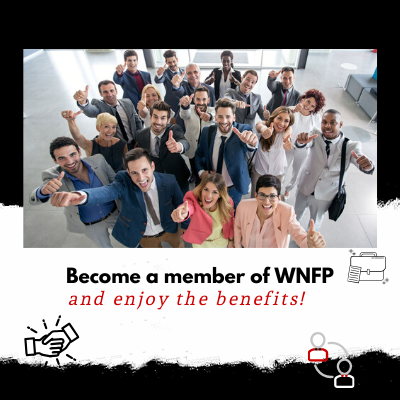|
Sometimes the client-accountant relationship evolves over time due to fickle fortune, changes in business or other reasons. When it does, accountants must recognize it in order to continue to help these clients achieve financial security, minimize legal risks and avoid potential liability claims. As the saying goes, “There is no friend like an old friend.” The same may be true in your professional life, as long-standing client relationships are often the most satisfying. They reinforce what it means to truly be a professional, guiding and advising clients across the arc of their working lives and, ideally, seeing them achieve financial security and peace of mind. While this is a common enough scenario, it is by no means inevitable. Over time, the accountant-client dynamic evolves, whether due to advancing age, fickle fortune or changes in the family or the business, to name a few. It is in these changes that the risk of professional liability lurks. Change is not intrinsically bad, of course, but when it is not recognized, the practitioner risks losing contact. By clinging to what was, rather than addressing what is, you will not be able to help the client plan for what shall be. According to data gathered by professional liability insurance carriers, practitioners are statistically at a higher risk of claims being asserted by the clients with whom they have worked the longest. No friend like an old friend, indeed. The following examples are based on real-life situations, gathered from decades of professional liability claims. (The names and businesses have all been changed.) Swimming in New Waters For decades, Bill Often, CPA, handled tax compliance for his client Precious Properties LP and its general partner, Mr. Grant Land. Land pursued deal after deal over the years, cleverly spotting real estate development opportunities and almost always coming out ahead. For each new tax year, Bill’s firm issued a standard engagement letter that contemplated end-of-year planning and preparation of returns. Along came a deal in which Land spied an opportunity for a Section 1031 exchange – his first foray with this strategy. He informally asked Bill to help him play by the IRS rules, in real time, as the deal unfolded. This was a new role for Bill after all their years working together. Without so much as a handshake with Bill, Land launched himself into his first 1031 deal. Land was also consulting with counsel and, at one point, another CPA firm. Bill was aware that Land was taking advice from multiple sources, which appeared sensible given the novelty and high stakes. As the deal played itself out, Land’s approach to Section 1031 compliance was somewhat erratic, with frequent changes in his proposed financing structure and his plans for use of the replacement property. Critically, no oral communications were documented and the email trail was spotty. In the end, mostly due to poor communication, there was an unexpected whopper of a tax bill for Precious Properties. Land was displeased, and he expected to be made whole. The attorney and the other CPA firm that had briefly consulted Precious Properties were nowhere to be found near the financial crater; but there was Bill, scratching his head and wondering how this had all blown back onto him. With no engagement letter addressing his 1031 consulting role, Bill was exposed. After decades of increasingly informal communications with Land, Bill had not felt the need for a deal-specific engagement letter. Nor had he felt the need to see that notes of meetings and phone calls were created. Looking back, as the deal raced along, Bill should have been on the sidelines calling the plays, if not in the huddle. But it was never made clear between these two old colleagues exactly who was responsible for which decisions, nor when they needed to be made and communicated. This late-career innovation by Precious Properties caught Bill by surprise, and he was not nimble enough to adjust. He relied on well-worn patterns of behavior, and that kept him from seeing change for what it was. It proved to be a costly omission. Caught in a Carbon Copy The next example involves a long-standing, now-elderly client who, in the course of updating and restructuring his estate plan, created a trust for his grandchildren. An estate attorney drafted the trust, but at the client’s request his CPA was “cc’d” on the draft sent by counsel to the mutual client for review. The CPA glanced through the trust instrument, billed a few tenths of an hour for having done so and then filed it away. Sometime later, a flaw in the trust came to light, and both the attorney and the CPA were held to account. The CPA believed that no formal (or even informal) communication had been necessary to distance himself from responsibility for what amounted to merely an introductory review of the draft. In this situation, the long and casual client relationship impaired the practitioner’s sense of risk management, leaving him exposed. What might he have done instead? Perhaps the CPA should have sent a quick email thanking the client for forwarding a copy of the trust “for my information,” and adding “the propriety and legality of the document are, of course, up to counsel.” This simple recital would most likely have held the wolves at bay. Other situations in which changes in the accountant-client relationship impair risk management can derive from client success stories, such as accumulating wealth, sale of a business or new investments. Each of these situations necessitates ongoing mastery of the tax code, awareness of potential conflicts of interest (involving business partners and/or family members), adequate staffing and clear lines of communication with the client. The flip side of this coin involves client setbacks, such as business failure, spousal divorce or business breakup. After years of relating to one another against the backdrop of a particular status quo, working with a long-standing client as he or she goes through a stressful life event should cause the practitioner to see the client as if through new eyes. If not, you put yourself at risk of missing both the perils and opportunities that may be present. The risk of conflicts of interest should come into view (as in good times), as should the risk of overextending the limits of your particular skill set (as in good times). Lest you shrug off this lesson and consider yourself always on top of your clients’ circumstances because you send them an annual tax questionnaire, consider how little thought clients (well, at least some of them) invest in this annual ritual. Consider how much more information you actually receive through a telephone call or a meeting of one kind or another. (In either case, take notes!) Does your questionnaire include, “Are you beginning to show signs of dementia?” I didn’t think so. Source:accountingweb.com Image: iStock
0 Comments
Leave a Reply. |
Membership is open to businesses and organizations interested in increasing visibility and brand awareness in Westchester County and surrounding areas.
Archives
May 2024
Categories
All
|


 RSS Feed
RSS Feed